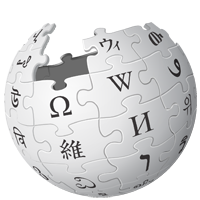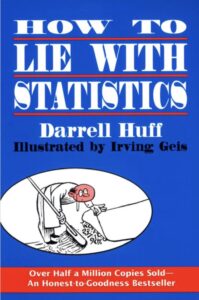
4 ways to evaluate white paper sources
So you’re writing a white paper…
And it’s time to cite an expert, define a term, or introduce a proof point.
Where do you find a good source?
If you’re like most writers, you do a few quick queries with Google and get a list of search results.
Then you start scrolling and clicking on the most likely-looking links.
Or maybe you ask an AI like ChatGPT or Bing to find some likely sources for you.
Hint: Always, always fact-check any sources you get from an AI. They could have made them up.
In any case, you gather a pile of research.
But how do you pick the most effective sources for your white paper?
First things first: Who’s your audience?
The first thing to do is make sure you understand your target readers.
Are they IT managers, HR professionals, C-level executives, or what?
What else can you say about them?
Three things I try to find out about any audience:
- Demographics (facts like age, sex, and education)
- Psychographics (attitudes and feelings, what keeps them up at night)
- Technographics (where they read: paper, phone, tablet, or desktop)
Your client may not know all this in exact detail. But even an educated guess is better than nothing.
For more help, see this article on understanding your audience.
Use a TARP to cover the ground in your white paper
Once you know as much as possible about your ideal reader, you can look for sources that score highly with them.

Then you can evaluate each possible source for these four factors:
• Timeliness
• Authority
• Relevance
• Proximity
Notice how these four make up a simple acronym: TARP.
I remember that with a catchphrase like, “A TARP covers the ground!” or “A TARP has four corners!” or “A TARP holds water.”
Those raindrops bouncing off the tarp?
Those are all the questions and doubts in a reader’s mind. Your white paper must answer those questions and overcome those doubts.
The best way to do that is to do enough research to find good sources.

1. Timeliness: How recent is the source?
Everyone likes to keep up-to-date. The more recent a source, the better.
If you’re trying to establish a hot industry trend, try to find sources from the past one or two years.
Remember that some things are totally different before and after Covid-19. So a source from 2018 may be irrelevant today.
In fast-moving fields like software or biotech, anything more than five years old doesn’t hold much water.
In other sectors, you may be able to go back to 2010 or even 2000.
But let’s face it: Quoting something from 1990 sounds like it’s 100 years ago.

2. Authority: How much weight does the source have?
Authority means how much “weight” or “gravitas” a source has for a particular audience.
“Authors” are still respected, because everyone knows it takes a lot of effort to write a book.
See if you can figure out which trade publications and websites your white paper audience reads.
What associations do they belong to?
Who are the leading experts and consultants in their field?
If you can pull quotes from a familiar source, those points carry more authority with readers.
You may find good research that supports your argument. But it comes from an obscure source, you might want to keep searching for something with more authority.

3. Relevance: How on-target is the source?
You want to find powerful proof that’s right on target. Every source should back up your latest point at just the right place in your argument.
I always look for three things here:
- Congruent logic
- Parallel SEO
- A punchy soundbite
Congruent logic
Two things are congruent if you can lay one on top of the other, and their shape matches. Can you do that with your source?
Does it say precisely what you’re saying at that point in your argument?
If so, it’s relevant.
But if a source zigs where your argument zags, it may not be relevant for your white paper.
Parallel SEO
Think about a source from an SEO angle.
Are the keywords in your white paper title in the quote you found? That’s good.
Let’s say you’re writing a white paper with tips to help HR executives manage remote workers. An ideal source might be titled “How to Manage Remote Workers in the Post-Pandemic Era.”
But an article called “Inner-City Commuting in 2022-2025” may have an interesting point you could use, but its title doesn’t run parallel to yours.
That means any avid reader who looks at that title may not be convinced that source is solid.
A punchy soundbite
Some beginning writers pull out long chunks of text, sentence after clunky sentence every time they need a quote.
But you really want quotes to be brief and punchy. The fewer words you cite to make your point, the better.
Look for the juiciest words, like the soundbites TV reporters use.
You want a few memorable words that clearly back up your point.
No matter what you think of O. J. Simpson, his lawyer Johnnie Cochrane came up with a great soundbite, “If it doesn’t fit, you must acquit.”
This is despite all these facts:
- The gloves from the crime scene were frozen and dried out
- O. J. first put on a pair of latex gloves, making his hands larger
- O.J. stopped taking his arthritis pills, so his hands swelled up
Even so, those seven words were the soundbite that swayed the jury.

4. Proximity: How close does the source feel to the reader?
Proximity means “closeness.” This comes from being in the same industry or doing the same job as the reader.
Or perhaps facing the same problems or being in the same region of the world or from the same group of people.
For example, a CFO in consumer electronics will relate closely to:
- Sources from the same industry
- A CFO in another consumer electronics company of the same size
- A CFO from another industry
But a quote from a COO at an airline won’t have nearly as much proximity.
When evaluating a source for proximity, ask yourself if your target reader has anything in common with the author. Anything at all.
If not, that may not be the best source.
Bonus tips on using Wikipedia

I think Wikipedia is an amazing cooperative project. I’ve contributed to several articles myself over the years.
But remember, it’s a secondary source.
A primary source is a first-hand account from someone who was there, or the original item under discussion.
A secondary source offers the view from someone who wasn’t directly involved.
That’s the difference between the American Constitution—a primary source—and an article written by someone about the constitution—a secondary source.
That article could have been written by a Supreme Court judge who spent 35 years studying the constitution, or by a high school student who cribbed something from the web in 10 minutes.
So not all secondary sources are created equal.
And yes, some articles in Wikipedia still contain factual errors, biased views, or unproven claims.
Use Wikipedia to find primary sources
It’s fine to use Wikipedia for background research, to get a quick understanding of a new term or concept.
Just don’t quote from it directly. That won’t impress anyone.
Whenever I see a white paper that starts with a quote from Wikipedia, I think, “Obviously done by an amateur.”
So here’s the key. Look down to the footnotes to the sources cited in that Wikipedia article.
Those are stronger sources, perhaps even primary sources. Click through to those.
That way, Wikipedia can give you a shortcut to far better sources.
The bottom line on white paper sources
Good sources are vital for any effective white paper.
The right sources can establish an affinity with the reader, back up your points, and show that your document is more than just one vendor’s opinion.
To find the best supporting material for your white papers, always evaluate the timeliness, authority, relevance, and proximity of each source.
In time, that will be second nature and you won’t even have to think “TARP.”
Want to see more articles like this? Get my free newsletter, White Paper World.




[…] And as explained in this article, the best evidence meets all four tests for proximity, authority, timeliness, and relevance. […]